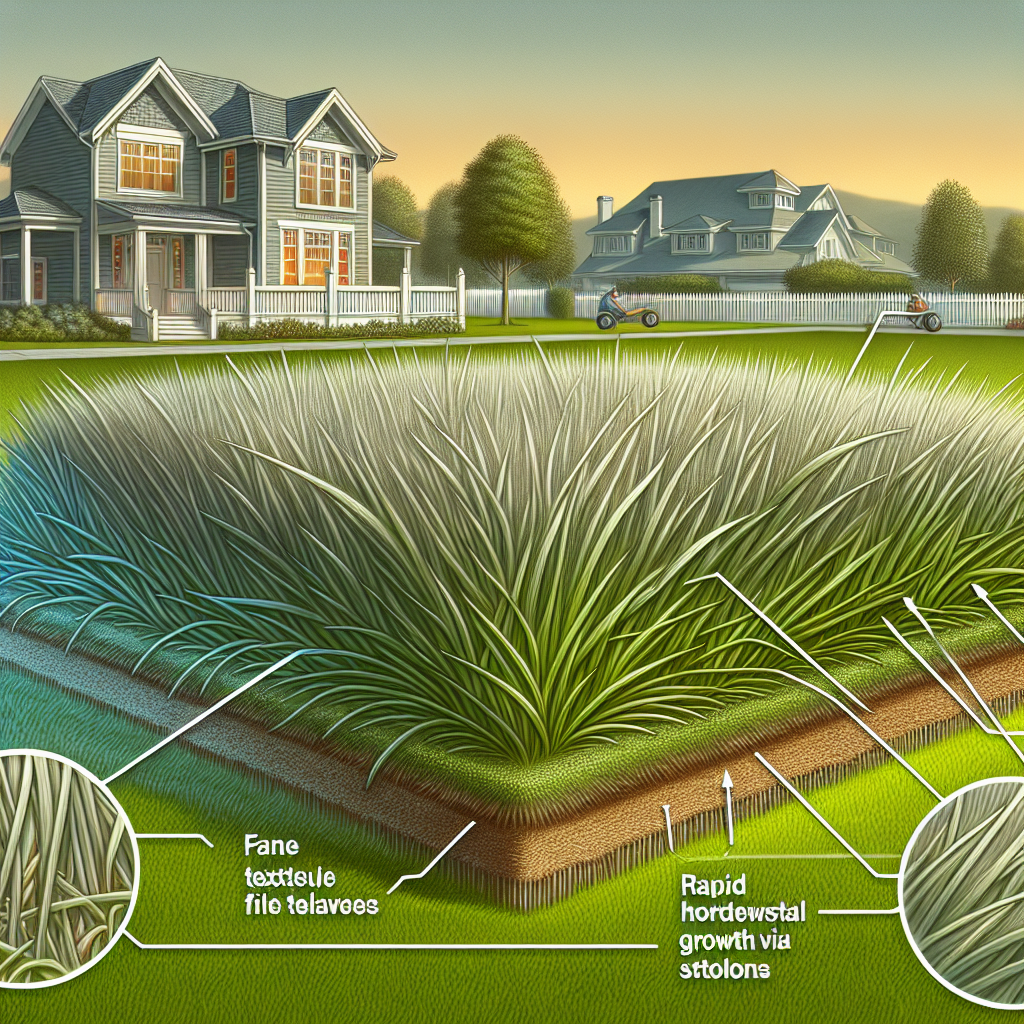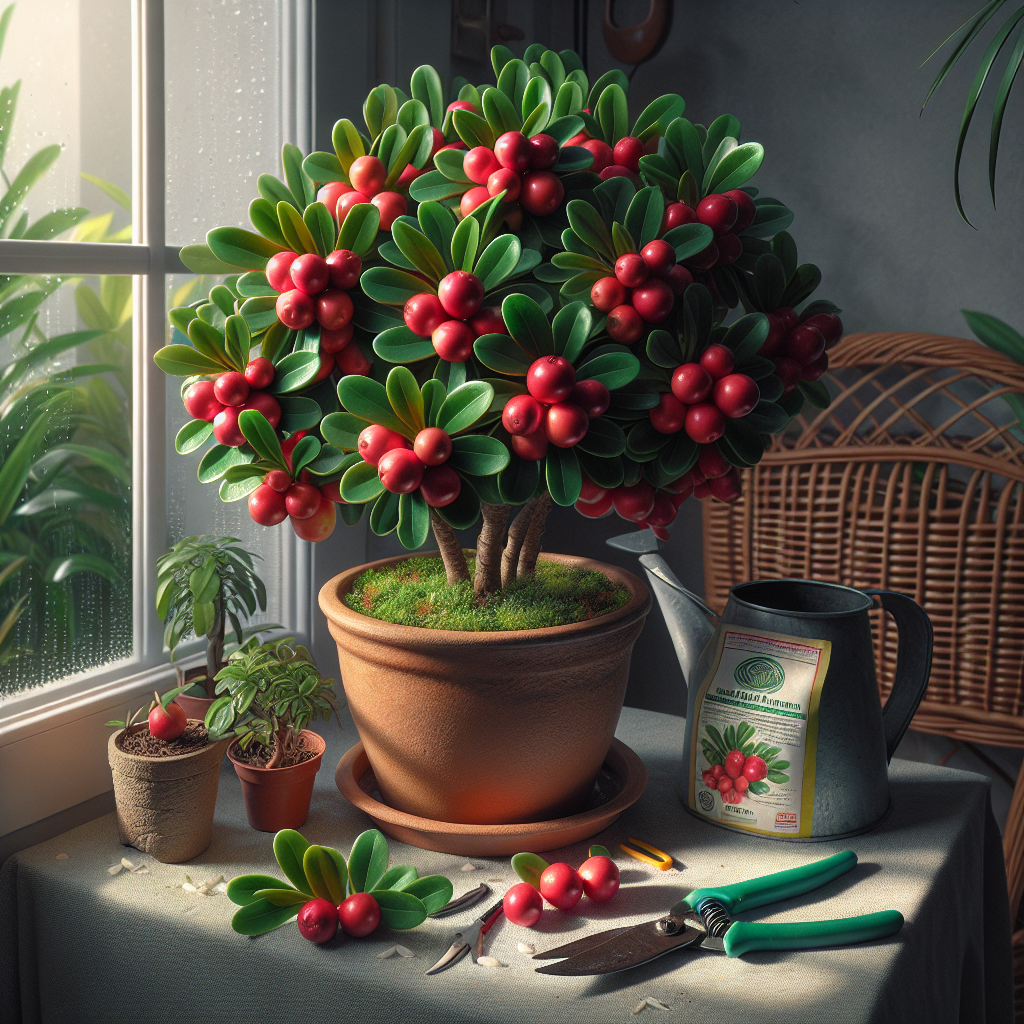How Pruning Can Control and Direct Plant Growth
Updated July 15, 2024 at 2:18 pm

Understanding Pruning and Its Impact on Plant Growth
Have you ever admired a well-maintained garden and wondered how each plant seems so perfectly shaped and healthy? The answer, quite likely, revolves around the ancient gardening technique of pruning. Understanding how pruning can control and direct plant growth is essential for any gardener looking to enhance the beauty and productivity of their plant life. Pruning isn’t just a method to improve a plant’s appearance; it’s a vital practice to influence how a plant grows, ensuring it remains healthy, vibrant, and well-adapted to its surroundings.
The Science of Pruning: How Cuts Influence Plant Behavior
When we make precise cuts on a plant, we aren’t just removing unwanted parts; we’re actually stimulating the plant to grow in a particular manner. Pruning takes advantage of the plant’s natural growth processes by encouraging the plant to focus its energy and resources on the most productive parts. By understanding the science behind pruning, you can guide your plants to develop a strong structure, produce more flowers, or even increase fruit yield.
Selecting the Right Tools for Pruning
Pruning can’t be done correctly without the appropriate tools. From hand pruners to lopping shears, each has its place in shaping your plants. One well-reviewed tool that comes highly recommended is the Fiskars Bypass Pruner. Designed for clean cuts on stems and small branches, this pruner is praised for its durability and ergonomic handle, making it comfortable for extended use. Users often note its precise cutting action and the ease with which it can handle tough cuts.
Find This and More on Amazon
Pruning Techniques for Different Plant Types
Not all plants require the same pruning approach. Deciduous trees benefit from winter pruning when they’re dormant, while flowering plants may need pruning right after their blooms fade. For instance, roses have specific pruning needs that differ from fruit trees; they require careful deadheading and the removal of old wood to promote healthy growth and abundant flowering.
Timing Is Everything: When to Prune Your Plants
Timing your pruning can mean the difference between a thriving plant and one that struggles to recover. For many plants, late winter or early spring, before the onset of new growth, is ideal as it minimizes stress and allows the plant to heal quickly. However, spring-flowering plants should be pruned right after their blooming period to prevent cutting off next season’s buds.
Pruning for Plant Health: Removing Diseased or Damaged Limbs
Pruning isn’t just about growth direction; it’s also a defensive strategy against disease and decay. By removing diseased, damaged, or dead limbs, you’re not only cleaning up the appearance of the plant but also preventing the spread of disease and pests. It’s part of a proactive approach to plant health maintenance.
The Art of Topiary: Creative Pruning for Aesthetic Appeal
Beyond health and productivity, pruning can be an art form, with topiary as one of its most creative expressions. This involves shaping plants into specific forms and structures, showcasing the gardener’s skill and the plant’s versatility. The right pair of shears, such as the ARS HS-KR1000 Professional Hedge Shears, are essential for this meticulous work. The ARS shears boast high-carbon steel blades and a slightly longer handle for extra leverage, making them ideal for precise shaping. Gardeners often laud these shears for their lightweight yet sturdy construction and sharp edges that make clean cuts every time.
Find This and More on Amazon
Maintaining Fruit Trees: Pruning for Optimal Yield
For those with fruit trees, pruning can have a remarkable effect on your harvest. Proper pruning ensures that trees get enough light and air circulation, decreasing the likelihood of pests and diseases while directing energy towards fruit production. Techniques like thinning out crowded branches and heading back to promote branching can make a significant impact on the quantity and quality of fruit. Remember, it’s a careful balance of removing enough but not too much.
Overcoming Pruning Anxiety: It’s Okay to Make Cuts
Many gardeners fear making the wrong cut, but pruning is a practice where learning by doing really applies. While you can read up on best practices, nothing replaces the experience of pruning your own plants and seeing how they respond. Begin with simple, clear objectives, such as removing dead wood or shaping for health, and as you become more confident, you can tackle more advanced techniques like rejuvenation pruning.
A Step-by-Step Guide to Pruning Techniques
If you’re ready to take your pruning skills to the next level, let’s dive into a detailed step-by-step guide. The first step is to identify the type of pruning required. For instance, thinning out helps to reduce plant density, improve air circulation, and allow more light in, which is crucial for the undergrowth and overall health of the plant. On the other hand, heading back encourages denser growth closer to the ground by cutting back to just above a healthy bud.
As you prepare to prune, remember the “Three Ds” rule: remove dead, diseased, or damaged branches first. This generally applies to all plants and is the safest starting point for beginners. Once the “Three Ds” are cleared, look for branches that cross each other or grow inward toward the center of the plant, as these can create tangles and foster disease.
The Role of Pruning in Training Young Plants
Young plants, particularly trees, benefit hugely from formative pruning. This is a type of pruning aimed at developing a strong, desirable structure in a young tree. It often involves selecting a main leader and removing or shortening competing shoots. Products like staking kits can be helpful in assisting young trees to grow straight and resist strong winds. The Luster Leaf Staking Kit is a popular choice known for its sturdy stakes and easy-to-use ties.
Training a young plant by pruning not only provides it with a solid foundation for future growth but also reduces the need for heavy corrective pruning as the plant matures. When plants like fruit trees are well trained in their earlier years, it sets them on the path for better air circulation and light exposure, vital factors for healthy and fruitful production.
Find This and More on Amazon
Common Pruning Mistakes and How to Avoid Them
Even with the best intentions, pruning can go awry if not done carefully. One of the most common mistakes is over-pruning, where too much of the plant is removed at once, which can stress and weaken it. Another error is making improper cuts, which can result in stubs that invite pests and disease. Experts recommend making angled cuts that allow water to run off, and using sharp tools for clean cuts that heal rapidly.
To avoid these common pitfalls, it’s worth investing in a high-quality pruning guide or resource that can provide species-specific advice. Additionally, attending a local gardening workshop can be an invaluable way to gain hands-on experience and techniques from seasoned gardeners.
How to Care for Your Pruning Tools
Pruning tool maintenance is critical. A blunt blade can damage branches, creating ragged cuts that take longer to heal. Tools should be sharpened regularly and cleaned after use to prevent the spread of disease. For example, a simple soak in a solution of one part bleach to nine parts water is an effective way to disinfect tools between uses. Proper care ensures that tools like the Corona Sharpening Tool, known to effectively maintain blade sharpness, can last a lifetime.
Don’t forget to oil the moving parts of tools like shears and pruners to ensure they operate smoothly, and always store them in a dry place to prevent rust. Pruning tool care may seem tedious, but it’s a worthwhile practice for the health of your plants and the longevity of your tools.
Find This and More on Amazon
Fostering Plant Health with Proper Pruning
Pruning is not only about the beautification of your garden but also plays a pivotal role in fostering overall plant health. It allows for the removal of potentially harmful parts of the plants and prevents overcrowding, which can lead to a multitude of issues including poor air circulation and inadequate light penetration, often resulting in unhealthy plants susceptible to pests and diseases.
Moreover, by judiciously cutting certain parts, you are essentially redirecting the plant’s energy to the most vigorous growing points. This can enhance fruit and flower production, increase foliage density, or even extend the plant’s lifespan. Pruning does indeed require patience and practice, but once mastered, it can turn your garden into a beacon of health and aesthetics.
Pruning as a Way to Shape Garden Spaces
Padding out your garden and shaping spaces can really bring your aesthetic vision to life. Hedges and shrubs can create living walls or frame views, depending on how they are pruned. Tools like the Black & Decker Electric Hedge Trimmer are specifically designed for shaping hedges and can make the job easier and more efficient for the gardener. The feedback on such tools often highlights their power and user-friendly ergonomics, which can make even ambitious pruning jobs seem more manageable.
When it comes to shaping, remember that it’s as much about what you leave as what you remove. Greenery can be shaped to direct the eyes or the flow of foot traffic, to conceal unsightly areas, or to create a sense of privacy. It’s this kind of pruning that blurs the lines between gardening and art.
Rejuvenation Pruning: Giving Old Plants New Life
Not all pruning is about subtle shaping or regular maintenance. Sometimes, plants need a more aggressive approach, commonly referred to as rejuvenation pruning. This involves cutting back a significant portion of a plant to reinvigorate it and encourage new growth. This technique is particularly useful for old, overgrown shrubs that appear past their prime.
Rejuvenation pruning can be daunting, as it essentially involves cutting plants down to a fraction of their size. However, many shrubs surprisingly benefit from and respond well to this drastic measure. The key is to know which plants will tolerate such severe pruning—it’s not suitable for all species—and to time the pruning correctly, as most plants recover best if cut back in early spring.
Exploring Bonsai: The Ultimate Pruning Challenge
The art of bonsai takes pruning and plant shaping to an extreme level, requiring precision, foresight, and a deep understanding of the plant’s growth habits. Creating a bonsai involves not just pruning the branches, but also the roots, and requires specific tools like miniature bonsai pruners or concave cutters. The Tinyroots Bonsai Pruning Kit is often cited as a good starting point for enthusiasts due to its quality and variety of essential tools.
While bonsai is a unique and specialized form of pruning, it does share the same principles as more general plant pruning: promoting health, directing growth, and creating aesthetic shapes. Bonsai is a perfect example of the intersection between horticulture and art.
Find This and More on Amazon
Maximizing Small Garden Spaces Through Pruning
If you’re working with a small garden space, pruning can be a game-changer. It’s a way to maximize your area and ensure that every plant has its place without overcrowding. Strategic pruning allows you to sculpt plants in a way that makes use of vertical space—think espaliered fruit trees along a wall, or climbers on a trellis. A reduced footprint doesn’t mean reduced greenery; it just means smarter, more thoughtful pruning.
Integrating Pruning into an Eco-Friendly Gardening Routine
Eco-conscious gardeners might wonder how pruning fits into a sustainable gardening practice. The truth is, it aligns perfectly. Pruned material can be turned into mulch or compost, which in turn nourishes the soil and promotes a healthy garden ecosystem. Responsibly disposing of diseased cuttings is also an environmentally friendly way to prevent the spread of pathogens without resorting to chemicals. When you prune thoughtfully, you’re not only taking care of your plants but the planet as well.
Winter Pruning vs. Summer Pruning: Understanding Seasonal Needs
The differences between winter and summer pruning are important to understand for optimal plant health. Winter pruning is usually more about the structure and health of the plant, while summer pruning manages plant size and improves the quality of fruits or blooms. By following these seasonal guidelines, your garden will be in sync with the natural growth cycles of your plants, leading to better results and more robust growth.
Practical Tips for Proper Pruning Etiquette
There’s also a social element to pruning—especially for those with neighbors close by. It’s important to know the etiquette, like pruning on your own property and not encroaching on others’ space. It’s also good to check local regulations about plant heights and boundaries. Communication with neighbors can prevent disputes and can even be an opportunity for community-building. Who knows, your pruning prowess may lead to a neighborhood pruning swap or garden club!
Pruning as a Stress Reliever: Therapeutic Gardening
Beyond its practical purposes, pruning can be incredibly therapeutic. Many find the focused, repetitive motions meditative and stress-relieving. It’s a chance to disconnect from the digital world and reconnect with nature. Gardening, in general, is known for its mental health benefits, and pruning is a part of that—offering both physical exercise and a sense of satisfaction as you see your plants flourish because of your efforts.
Pairing Plants and Pruning: Creating Complementary Growth
Another aspect of pruning is understanding how to pair plants for complementary growth. Some plants, when pruned correctly, can support the growth of their neighbors, either by providing needed shade or by not competing for resources. This idea of complementary planting extends to understanding sunlight patterns, root competition, and can influence the overall design and success of your garden.
Practical Application of Pruning Skills in Urban Farming
Urban farming is on the rise, and with it, the need for good pruning practices. Pruning can be vital in an urban setting where space is limited and maximizing yield is important. Using pruning strategies to manage an urban orchard or a rooftop vegetable garden ensures that space is used efficiently and can result in a surprising abundance of fresh produce, even in the heart of a city.
Building a Pruning Toolkit: Essentials for Every Gardener
If you’re ready to take on pruning, building your toolkit is the first step. Essential items like a reliable pair of secateurs, loppers for thicker branches, and a pruning saw for the toughest cuts are non-negotiable. The Felco F-2 Classic Manual Hand Pruner is a favorite among gardeners worldwide. Its precision blades make clean cuts, and its metal parts are fully replaceable, making it a long-term investment. When building your pruning toolkit, think about ergonomics, durability, and having the right tool for the job to make the pruning experience enjoyable and efficient.
Find This and More on Amazon
Garden Renovation: Reviving Overlooked Spaces with Pruning
Garden renovation can be a daunting task, but pruning is often the first step in reviving neglected spaces. Removing overgrowth and strategically pruning can dramatically transform a garden area, making it more inviting and manageable. This might involve cutting back invasive species, shaping hedges, or opening up the canopy of trees to let in more light. With each cut, you’re not just tidying up—you’re setting the stage for new growth and new possibilities.
Pruning for the Future: Sustainability and Growth
Lastly, when we talk about pruning, it’s not just about the present; it’s about setting the stage for future growth and sustainability. By making informed pruning decisions today, you’re creating the conditions for plants to thrive for years to come. It’s a commitment to the ongoing health and beauty of your garden ecosystem—a legacy that will be enjoyed by you and by generations after.
Final Thoughts on Mastering the Art of Pruning
Pruning is much more than a simple gardening chore; it’s an art form, a science, and an integral part of responsible plant care. Whether you’re aiming to maximize fruit production, encourage flowering, control plant size, or simply keep your garden looking tidy, mastering the art of pruning is essential. With the right tools, techniques, and timing, your garden can be a space of beauty, productivity, and tranquility. Embrace the snip, clip, and shear; your plants—and your future self—will thank you for it.
Shop more on Amazon

